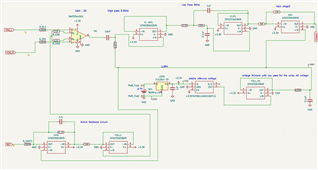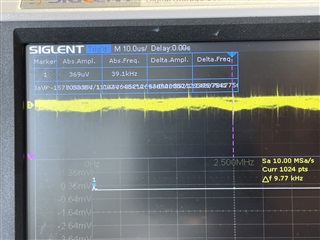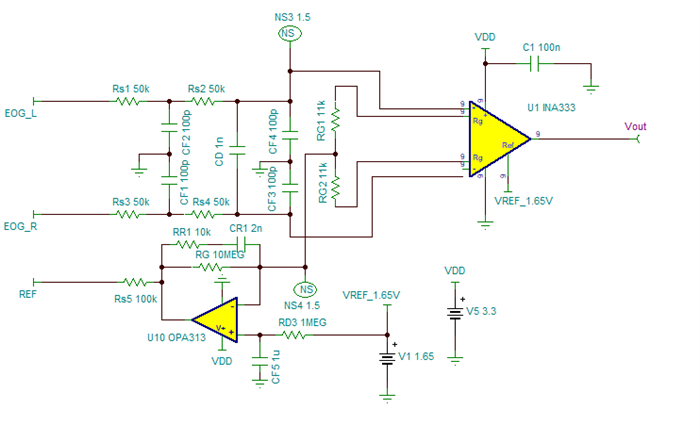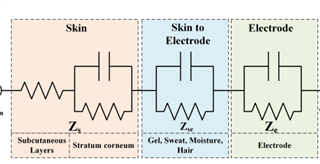Other Parts Discussed in Thread: OPA2333, INA826, OPA392

The circuit is shown above
Application : I'm using the INA333 amplifier as my first gain stage that takes two inputs from horizontal EOG electrodes placed on the sides of the eye close to the temple. I take the common mode at the middle of two matched gain resistors, invert it and biased against the stable 1.65V reference to feed it into the body through the reference electrode. I expect to see an amplified output by a factor of 20. But none of that happens. If I hook up the output to the oscilloscope, it's weird, just a ton of noise and small amplitudes. When I used a voltmeter, the inputs were around .7-.8mv and the output was between .7-.8mV. NO Change to the outputs. While common mode was around .175 mv. I also thought the voltage at the reference would be around 1.65 as it's biased to that voltage but it's ~ .8mV just like the inputs.
The circuit was hand soldered on a perfboard. Also one thing the circuit does not include which the soldered board includes is a decoupling capacitor of 0.1uF between the positive rail 3.3V and ground for all the opamps.

That's the oscilloscope output, the top is the signal and the white graph below is the fft. The table contains markers of the peaks, in this case just one peak and at some KHz?!
Based on my understanding of the datasheet of INA333 and opamps in generally, I feel like I've covered all the bases. I don't quite understand why my output is not amplified. The only other thing I can think of doing is ordering a layed out PCB.
Anyone have any possible solutions of experiments to potentially work through to solve this problem.



